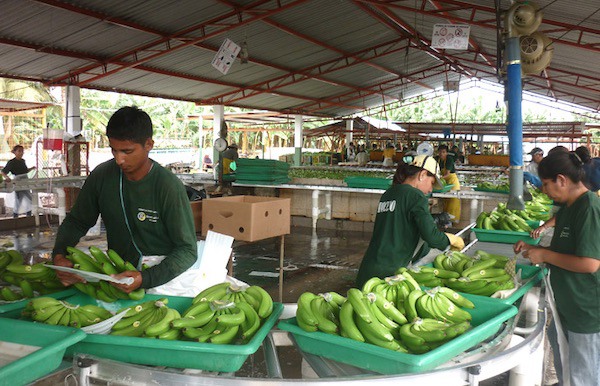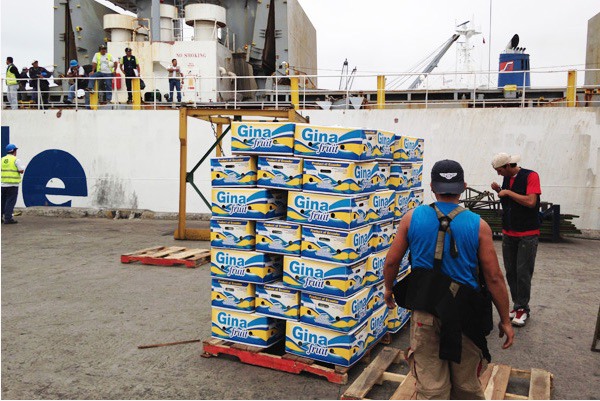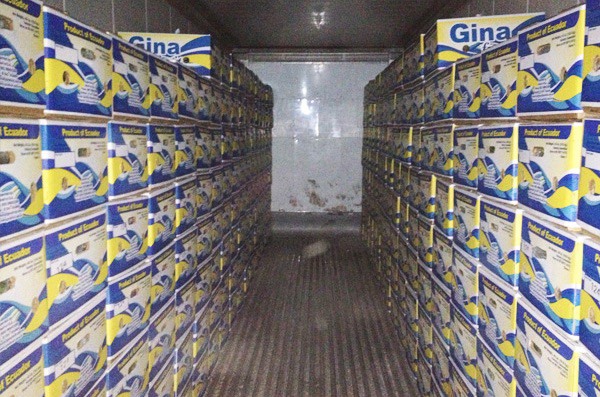The banana industry has been seeing many ups and downs so far this year, and Hugo Castro of GinaFruit does not expect this pattern to change anytime soon. He says: “The hurricanes in Central America at the end of last year greatly reduced the banana supplies coming from Guatemala and Honduras, and this has been putting pressure on the market.”

Pricing changes every week
In addition to the reduced volumes coming out of Guatemala and Central America, Ecuador is currently in the lower end of their high production cycle. “The high demand, combined with the lower than expected volumes, has really pushed up prices. It has been a rollercoaster ride in the markets because there are some who are not willing to pay the high prices. So, they don’t purchase the bananas which reduces the demand and then the prices go down again. As soon as the prices go down, these markets start purchasing again which increases the demand and makes the prices go up again. So, there is no visibility on what will happen in the near future – we are living on a week-to-week and even a day-to-day basis,” Castro explains.
This situation, which is mostly spurred on by the production challenges in Central America, is expected to last throughout the year. “Sources have been saying that it will take at least this whole year for the farms in Honduras and Guatemala to come back to production because of the flooding and all the other problems they are seeing. It takes a lot of time and money to get it all up and running again. Maybe toward the end of the year they’ll be able to start pushing out volumes again but that’s something we can’t predict,” says Castro.

Pandemic challenges continue
In addition to the effects of the hurricanes, the banana industry is still dealing with the challenges from the pandemic as well. “Shipping lines have been increasing their freight rates because of the container shortage,” says Castro. He explains: “The entire logistics chain has been changed due to the pandemic and the freight prices have gone up a lot. In Ecuador, we are at a disadvantage compared with the other major banana producing countries because of our location – we have to pass through the Panama Canal and the entire journey takes longer. While the prices have increased for everyone in the banana “system”, the prices for Ecuador have seen a disproportional increase because of these factors.”

The total price of production has also gone up because of the pandemic, says Castro. “The materials we need to export the bananas have increased in price. Carton boxes, for example, have become more expensive because consumers all over the world are ordering online much more often, which requires a global increase in demand for cardboard to pack these orders. Plastic bags, too, are more expensive now because their production is dependent on the oil prices, which have also increased,” he shares.
Despite these challenges, Ecuador continues to fight to be competitive. “Because our currency is dollarized, our bananas are the most expensive of the total global supply. With the economic crises resulting from the pandemic, this is not a good position to be in. It’s a constant fight to continue to be competitive. We offer great quality, but we need to also be able to compete price-wise,” Castro concludes.

The production coming out of Ecuador will see a peak in April and May, after which the volumes will be lower for a few weeks until week 35 when the normal curve of production returns.
 For more information:
For more information:
Hugo Castro
GinaFruit
Tel: +593 999423369
Email: [email protected]
www.ginafruit.com.ec
